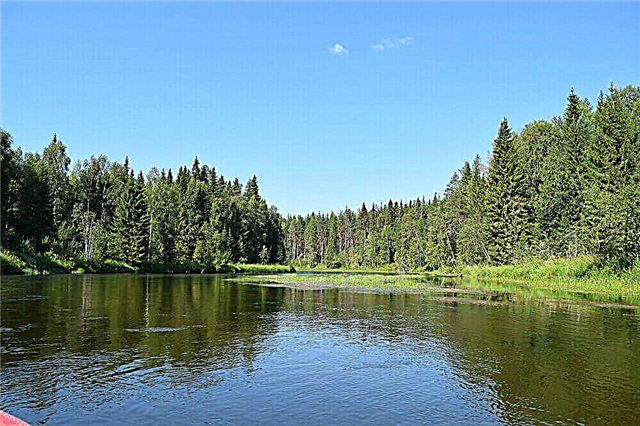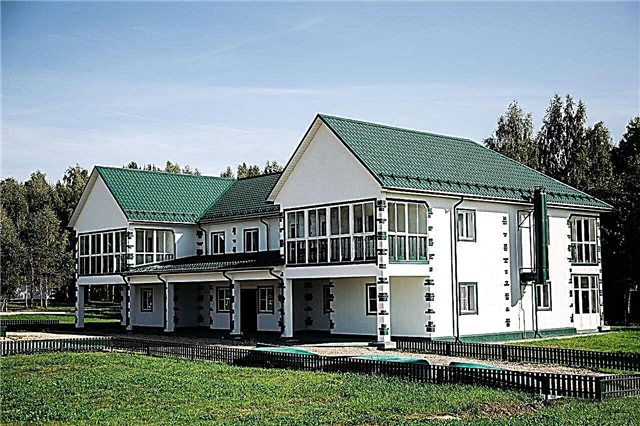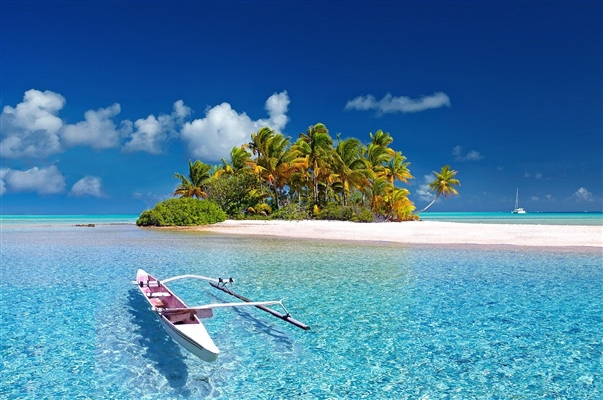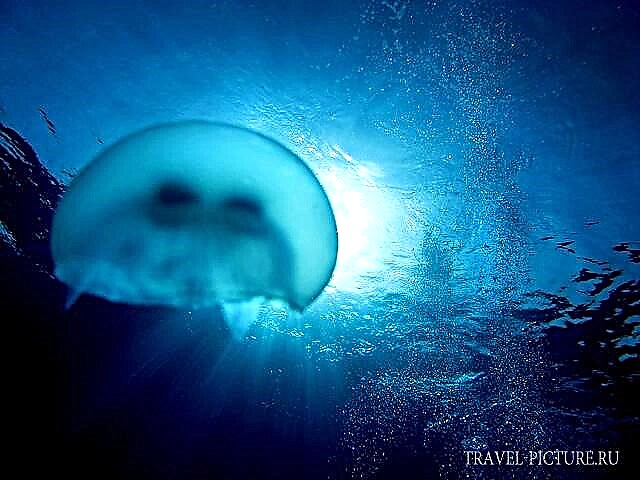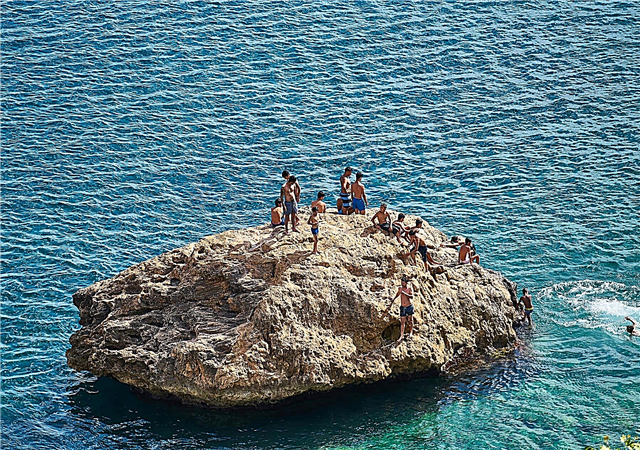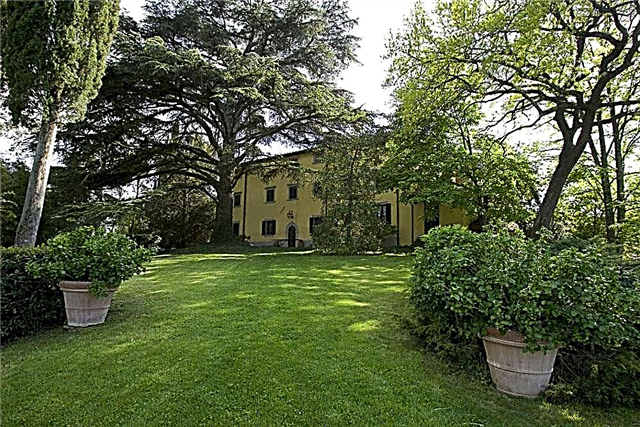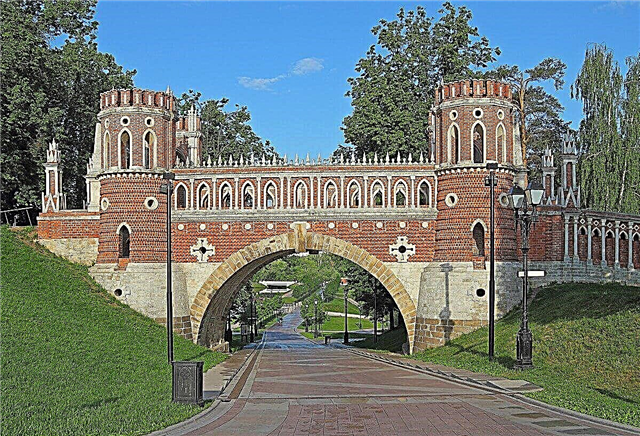The picturesque Tsaritsyno Park is known for its beautiful landscapes and magnificent architecture. The basis of the park is a palace ensemble consisting of several buildings in the same style, made of bricks with white stone decor in the Russian Gothic style. The construction of the Tsaritsyno estate began during the reign of Catherine II. In the early 2000s, most of the buildings in the park underwent a large-scale reconstruction and acquired their original historical appearance.
The natural part of the reserve is a large landscape park and a cascade complex of Tsaritsyn ponds. Beautiful bridges, gazebos and pavilions are gracefully built into the landscape part of the estate. The beauty of nature and the grandeur of the buildings are in perfect harmony and complement each other. The park's greenhouses contain rich collections of plants, including tropical and subtropical ones.
What to see and do in Tsaritsyno?
List of the most interesting and beautiful places of the palace and park ensemble.
Great Tsaritsyn Palace
It is the main attraction of Tsaritsyno. The construction of the palace took 11 years. Its architecture is presented in two styles - classicism and pseudo-gothic, which makes it possible to call the palace one of the most significant buildings of the 18th century. The palace consists of two wings - the chambers of the empress and her son. A majestic and eye-catching passage connects them. Lancet arches and towers add elegance to the palace.

Light and music fountain and horseshoe island
The island, resting on piles, was created during the reign of Catherine II. Since 2007, instead of a pond, a fountain has functioned on the island, which was called the most beautiful in the capital by the residents of Moscow. The diameter of the fountain is 52 meters, its 900 jets fly up 15 meters in the same rhythm with light and music. Every day hundreds of people come to see the magical and mesmerizing combination of water, light and music.

Tsaritsyn ponds
The cascade of Tsaritsyn ponds was formed for almost two centuries - from the 16th to the 18th. The most beautiful is the Upper, with an area of 17 hectares. Its artificial islands have a regular geometric shape and decorative plantings. The Middle Pond is separated from the Lower by a dam, designed by the architect Blanc. In historical places, boat docks have been recreated here. Recreation areas have been arranged on the banks of the ponds.

Tsaritsyno landscape park
Laid down in 1775. The arrangement of the regular garden was carried out by the architect Vasily Bazhenov and garden masters from England Iod Mourneau and Francis Reed. In 2005-2007, a complete reconstruction of the park was carried out with the involvement of renowned landscape architects. In addition to restoring the original landscape views, many sculptural decorations have been installed in the park, including several grottoes. Gazebos and pavilions appeared in the park.

"Kitchen building" (Bread House)
Built to accommodate kitchens. On the front facades of the building there are high reliefs made in the form of a salt cellar and a loaf. The premises of the Kitchen Building have an enfilade structure. Currently, its halls house expositions of the museum's collections. The atrium is used for concerts and exhibitions, including organ music. The tool was made specially for the Bread House in Germany.

Gallery-fence with a gate
Built at the end of the 18th century. This decorative structure completes the ensemble of three royal palaces and the Kitchen Building. The facades of the gallery-fence are richly decorated. The front side is decorated with columns and white stone decor of pyramid pinnacles and woven hearts. The gate has spiked arches and two-tiered turrets. The architectural appearance of the gate gives the ensemble a solemn and complete look.

Monument to V. Bazhenov and M. Kazakov
The monument to the great architects who created the Tsaritsyno estate was opened in 2007. It is located right after the Kamennaya Gallery arch, between the Grand Palace and the Bread House. The author of the sculpture, Leonid Baranov, depicted the masters at the time of the discussion of the construction of the Grand Palace. The monument is popular with visitors to the museum-reserve; people who want to be photographed often line up to it.

First Cavalry Corps
A small one-story building is located on the edge of the Big Ravine. It is L-shaped. In 1988, under the leadership of employees of a Polish restoration company, the original layout of the building was restored - three rooms from the front, the lace parapet and the white-stone pediment were renewed. The body is decorated with a kokoshnik pediment and brick columns. Currently, the building houses the administration of Tsaritsyno.

Second Cavalry Corps
The pavilion has an octagonal shape. Thanks to her, the building has a unique layout - the rooms are connected to each other and the center. The rooms have external and internal doors. The building is built of red bricks. Its adornments are white stone décor of lancet high windows, plinth and cornice. Now the second cavalry building houses art exhibitions of the museum, attracting a large number of visitors.

Third Cavalry Corps
Built in 1776-1779. Located on a hill near the Middle Tsaritsyn pond. In terms of style, it differs from the First and Second Cavalry Buildings. It has rounded outer corners and tall windows. The building is crowned with an elegant belvedere tower. Part of the round hall protrudes outward and forms a semi-rotunda. In the cavalry building there is an exposition "Dachnoe Tsaritsyno".

Middle Palace (Opera House)
One of the most interesting buildings in Tsaritsyno with a complex decor. Intended for small informal ceremonies and receptions of Catherine II. Its design is traditional for the overall appearance of the estate - the palace was built of red brick and decorated with white stone. The simple first floor is crowned with an elegant and intricately decorated second floor. A special decoration is an openwork arcade with images of sickles and disks.

Small Palace (Semicircular Palace)
Built personally for Catherine II. The six rooms of the palace include a boudoir and an oval hall. They are now used as showrooms. The location of the palace is very picturesque - on a high hill near the Tsaritsinsky pond next to the Figured Bridge. The building has no rich ornamentation, only its eastern facade is crowned with an imperial monogram. This monogram is used as the emblem of the entire Tsaritsyno estate.

Temple of the Icon of the Mother of God "Life-Giving Source"
The temple has a typical Elizabethan baroque style - an octahedral shape topped with a faceted dome. It was founded in 1722 and has been rebuilt twice since then. During the restructuring, a southern side-altar was added to the temple, and the bell tower became three-tiered, becoming the dominant feature of the entire structure. The largest of the six bells weighs 180 pounds. The church has preserved Baroque stucco moldings from the 18th - 19th centuries and 19th century paintings.

Tsaritsyn Dam
The largest preserved dam in Tsaritsyno. Earlier, the road from Kolomenskoye to the residence of Catherine II passed along the dam. Now the central alley of the park runs through the dam. The best way to assess the hydrotechnical characteristics of the dam is from the side of the Upper Pond. From the side of the Middle Pond, the dam looks like a three-arch bridge. In winter, a large number of ducks gather near the drain.

Figured bridge
It was erected in 1776-1778 and is one of the few surviving buildings of the Tsaritsyno ensemble. The main alley of the museum-reserve passes through the bridge. The high towers of the bridge give it an appearance of reliability and stability. The bridge, like most of Tsaritsyno's buildings, is built of red brick with white stone decorations.It is located on the slope of a hill and behind it there is a beautiful view of the entire palace panorama.

Big bridge over the ravine
One of the best preserved large bridges of the 18th century, with unique artistic features in the pseudo-Gothic style. It doesn't look bulky thanks to decorations and decorations that make it visually lighter. At the same time, the bridge was originally conceived not so big. Due to the nature of the soil, more than 2,000 piles were driven during construction. During the Great Patriotic War, columns of tanks passed over the bridge.

Greenhouse bridge
The author of the project is Ivan Yegotov. The bridge was built in the 19th century, after the death of Catherine. Then Tsaritsyno became a popular place for out-of-town picnics. This coincided with the development of gardening in the park. The functions of the bridge are mostly economic - it connects the main territory of the reserve with greenhouses and large orchards. The decor of the bridge is modest, but kept in the general style of the Tsaritsyn ensemble.

Curly (Grape) gate
Located on the conventional border between the park and palace parts of Tsaritsyno. The author Bazhenov himself called them curly because of the large number of intricate shapes and patterns. The gate was called grape because of the white-stone pattern in the arched opening, similar to a bunch of grapes. The style of building the gate combines artistry and solemnity. Currently, most of the decor of the gate has been lost.

Pavilion "Milovida"
Made in the Empire style. The Milovida Pavilion is considered the most interesting of the pavilions built at the beginning of the 19th century. It is a graceful gallery with four corner vaulted rooms. Inside it is decorated with columns and has painted vaults. The pavilion was built in a picturesque place, it offers a wonderful view of the Upper Tsaritsyn pond with an island. Now the pavilion houses the security of the museum.

Pavilion "Nerastankino"
The second name of the Nerastankino pavilion is the Temple of Melancholy. The pavilion was built in 1803 according to the project of Ivan Yegotov. This is a modest gallery with a low dome, built in the style of classicism. In the 19th century, the pavilion, like many buildings in Tsaritsyno, fell into disrepair and fell into disrepair. Its historical appearance returned only in 2007 during the reconstruction. At the same time, its sculptural decoration was restored only partially.

Pavilion "Temple of Ceres"
The gazebo was built in 1805. It is located on the southern side of the landscape park, on a small hill. It was from here that Catherine II loved to observe rural holidays. The gazebo was named in honor of Ceres, the goddess of fertility, whose statue was installed in the gazebo immediately after construction. Currently, the gazebo is decorated with a modern statue, which replaced the original sculpture destroyed during the war.

Ruin tower
This building is called the most romantic building in Tsaritsyno. Currently, it is a dilapidated tower with fragments of white stone and brick walls. It was built in 1804. In those days, the construction of artificial ruins was in vogue. Because of the stairs leading to the ridge of the northern wall, the tower was called the "Devil's Staircase" for some time. Climbing and descending it is quite difficult.

Arch-ruin on the island ("Mermaid's Gate")
Located on an artificial island in the middle of the Upper Tsaritsyn Lake. A beautiful view of the arch opens from the side of the Nerastankino pavilion. Against the background of trees and water, the ruin arch looks especially impressive. According to legend, girls gathered on the lawn opposite her and danced in a mermaid for a week on the feast of Trinity. At the time of construction, there was a tower near the ruined arch, but it was not restored during the reconstruction.

Grotesque bridges
Arched bridges are located in the southern side of Tsaritsyno Park. They connect the slopes of a deep ravine near the "Nerastankino" and "Temple of Ceres" pavilions. The bridges are built of bricks; its white-stone décor has rough stone inserts. All bridges have parapets, which eventually replace smooth white stone bollards. During the construction in 1805, there were 3 bridges; to date, only the Big and Small bridges have survived.

Grape greenhouse
It was built at the beginning of the 19th century especially for the cultivation of the best grape varieties. During the decline of the Tsaritsyn estate, the greenhouse changed owners several times - it housed dachas and communal apartments. After that, the white stone building practically turns into ruins. The greenhouse was rebuilt on a historical foundation in 2008. Now grapes, figs, pomegranates, agaves grow in it.

First Greenhouse building
At present, in the building, as in the 18th century, tropical and subtropical plants from different parts of the world grow - hibiscus, pelargonium, blue passionflower, cycads, ivy, fuchsia. There are several palms. The winter garden looks especially beautiful during flowering. The original First Greenhouse Building was dismantled at the end of the 19th century. Completely restored in 2008 during a major renovation.

Vyatichi burial mounds
On the territory of the park in Tsaritsyno there are several burial mounds. In the 19th century, the ancient burial grounds were perceived by visitors as romantic ruins. Vases and statues were placed among them. During large-scale archaeological research, many Vyatichi burial mounds from the XI-XIII century were revealed. Wooden sculptures of ancient Russian deities are currently installed near several burial mounds.

Foundations and fragments of the walls of the Great Cavalry Corps
The large, also the fourth, Cavalry Corps during construction in 1782-1784 was one of the main buildings of the general palace Tsaritsyno ensemble. Dismantled in 1795 due to the construction of the Grand Palace. The foundation and fragments of its walls are fenced off and attract little attention of visitors. This building occupies a central place on the mock-monuments of the Bazhenov estate project.

Foundations of the Gardener's House
The remains of the foundation were discovered in 2007. The building was built at the beginning of the 19th century. It is located in the Watchtower Park and presumably it was originally used as a bathhouse by the servants of Tsaritsyno Park. After it was arranged for the workers of the landscape park to live. After several reconstructions in the 1970s, the house was finally dismantled. The white stone ruins are under the special protection of the park administration.

Visit Center
Since 2019, the Tourist Information Center has been a single space for visitors. For the convenience of guests, it has combined all the basic services - in the visitor center you can buy tickets to exhibitions and museums, get background information about the services and work of the reserve. The shop of the visitor center has a wide range of products - a variety of souvenirs, travel guides to Tsaritsyno, educational literature.



